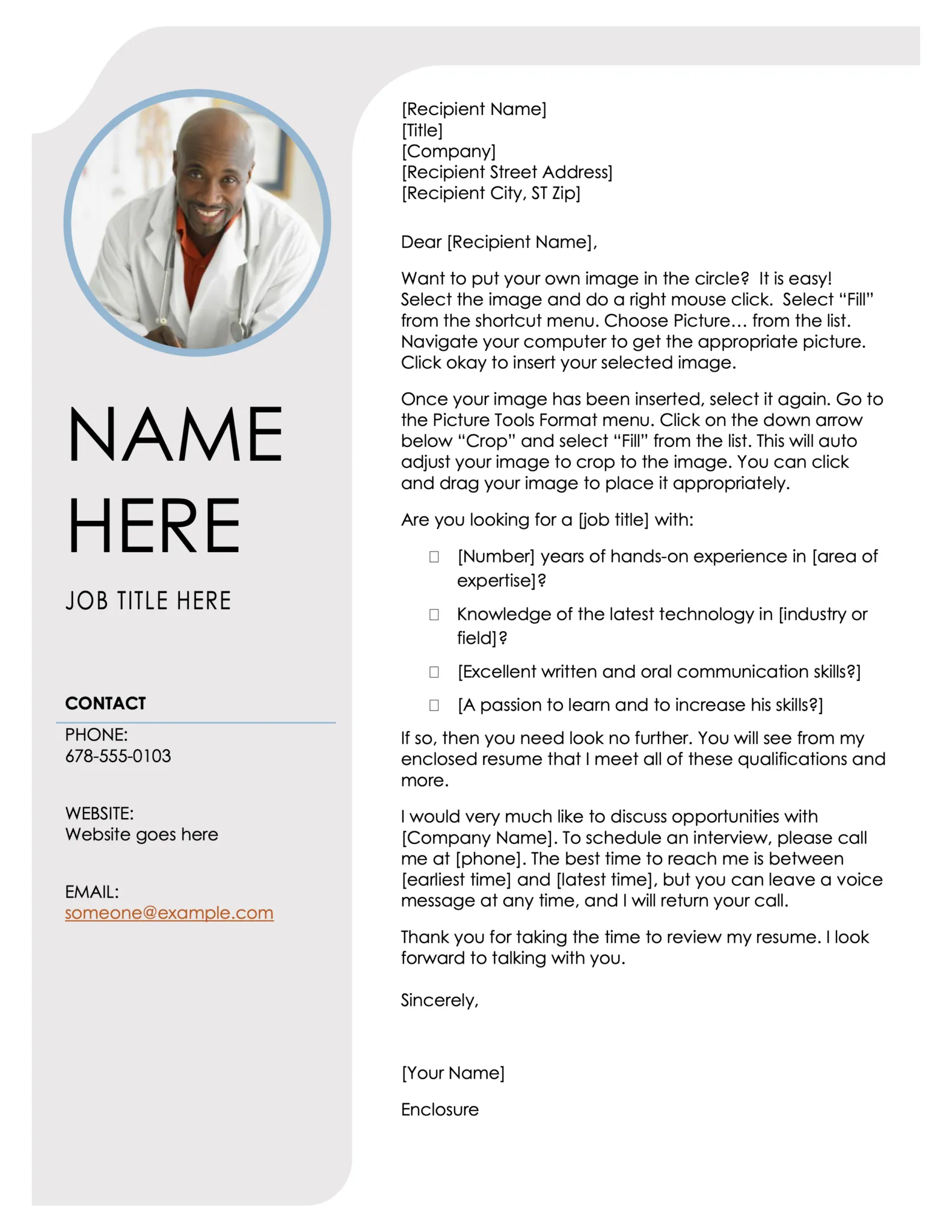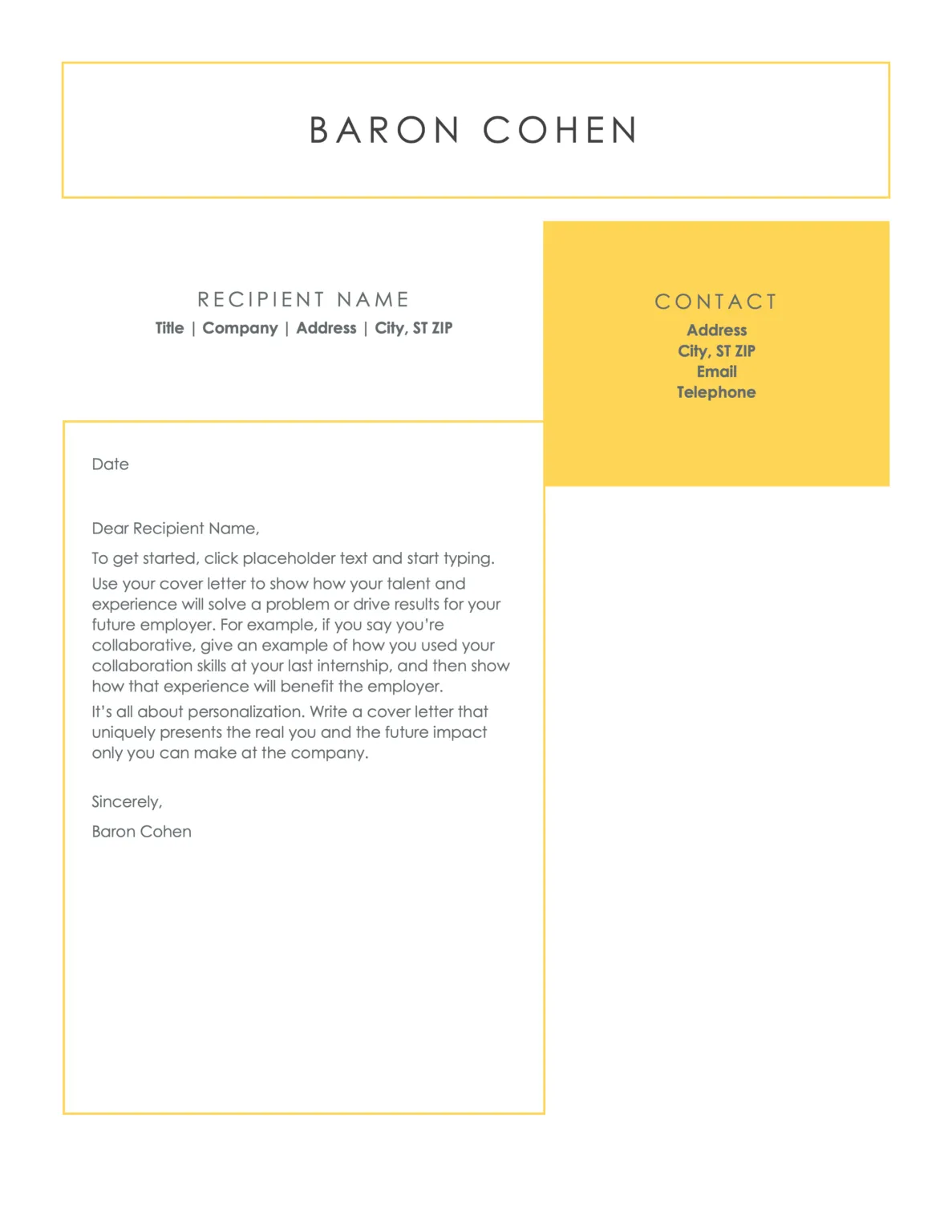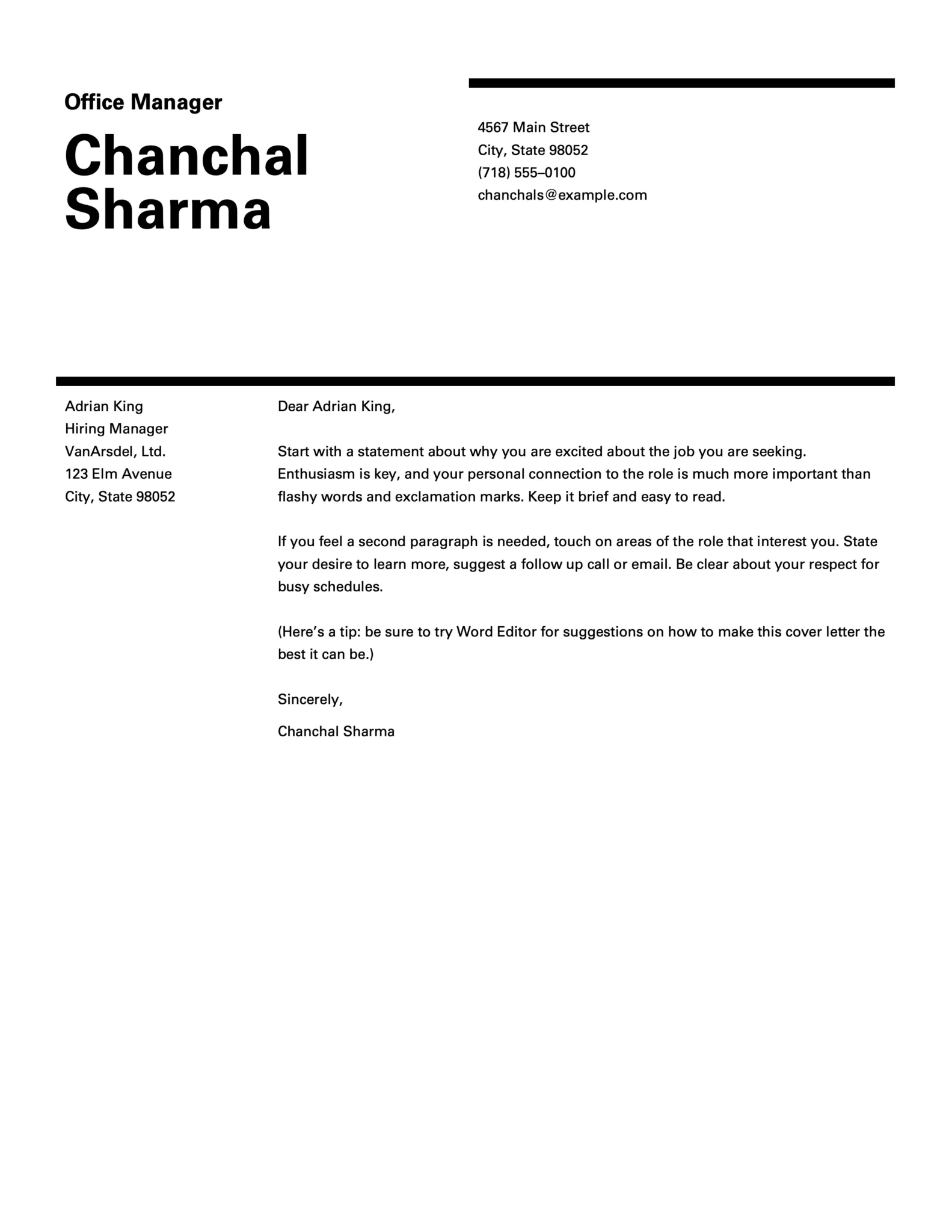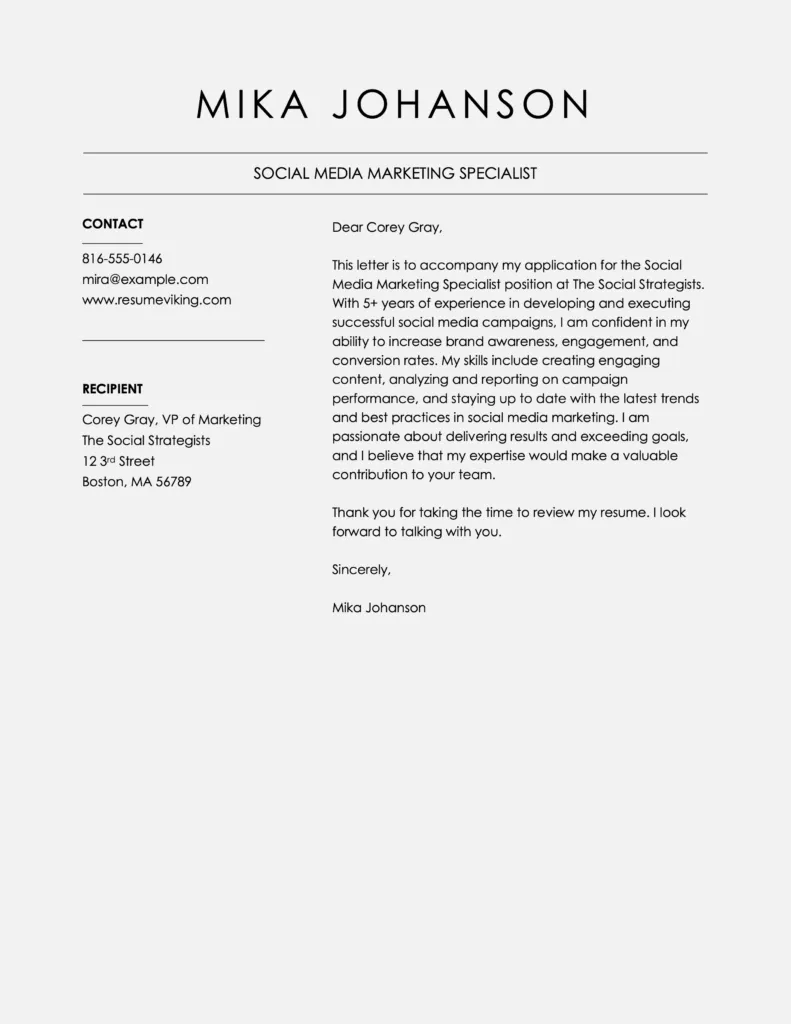Why a Cover Letter Matters
In the competitive world of job applications, a well-crafted cover letter can be the key that unlocks the door to your dream job. Many job seekers underestimate the power of this essential document, but a cover letter serves as your first introduction to a potential employer and offers a unique opportunity to showcase your personality, skills, and enthusiasm for the role. It allows you to go beyond the confines of your resume, providing context and depth to your qualifications. A strong cover letter demonstrates your written communication skills, highlights your achievements, and explains why you’re the perfect fit for the position. In essence, it’s your chance to make a compelling first impression and persuade the hiring manager to read your resume with interest, leading to an interview.
Consider your cover letter as a personalized sales pitch, designed to capture the attention of the hiring manager and differentiate you from other applicants. By addressing the specific requirements of the job and highlighting your relevant experience, you can demonstrate your understanding of the role and your commitment to the company. A well-written cover letter also reveals your research into the company culture and values, showing that you’ve taken the time to understand their needs and align your career goals with theirs. Without a cover letter, you miss out on the opportunity to tell your story, share your passion, and provide the context that brings your resume to life. Therefore, making the effort to create a tailored and impactful cover letter is an investment that significantly increases your chances of landing an interview and ultimately, securing the job.
Cover Letter Essentials
Before you start writing, ensure you have the fundamental components in place. Begin with a professional header, including your contact information: your name, phone number, email address, and optionally, your LinkedIn profile URL or portfolio link. Next, address the cover letter to the hiring manager, using their name whenever possible; this shows you’ve done your research and are paying attention to detail. If you can’t find the hiring manager’s name, use a generic greeting like ‘Dear Hiring Manager’ or ‘Dear [Company Name] Hiring Team’. Following the salutation, start with a strong opening that grabs the reader’s attention, for example, by mentioning where you saw the job posting or highlighting a key achievement related to the role. This sets the tone for the rest of your letter.
The body of your cover letter should provide a concise summary of your skills and experience, emphasizing how they align with the job description. Instead of simply repeating your resume, use this space to elaborate on your qualifications and demonstrate your ability to solve the employer’s problems. Quantify your accomplishments whenever possible by using numbers and data to show the impact you’ve made in previous roles. For instance, instead of saying ‘Managed social media accounts’, you could state ‘Increased social media engagement by 30% in six months’. Keep your tone professional and enthusiastic, showing your genuine interest in the company and the position. Conclude with a call to action, expressing your eagerness for an interview and thanking the reader for their time and consideration. Proofread your cover letter carefully before submitting it to ensure it’s free of grammatical errors and typos.
Personalize Your Cover Letter

One of the most common mistakes job seekers make is sending generic cover letters. To truly stand out, you must personalize each cover letter to the specific job and company. Start by carefully reading the job description and identifying the key skills and requirements the employer is seeking. Then, tailor your cover letter to address these needs directly. Highlight your relevant experiences and achievements that align with the job description. This shows the hiring manager that you’ve put in the effort to understand the role and that you possess the qualities they’re looking for. Conduct research on the company to understand its mission, values, and culture. Mentioning these details in your cover letter demonstrates your interest and shows that you’re a good fit for the organization.
Personalizing your cover letter also involves using the right tone and language. Avoid sounding overly formal or generic. Instead, try to reflect the company’s culture and use a tone that is both professional and engaging. Address the hiring manager by name whenever possible, as this shows you’ve taken the time to learn about the company and the specific role. Referencing specific projects or initiatives the company is working on can also demonstrate your understanding of their goals and priorities. By making these adjustments, you prove that your cover letter is not a generic template but a genuine representation of your interest and qualifications for the job. This level of personalization significantly increases your chances of making a positive impression and getting invited for an interview.
Formatting a Cover Letter
Effective formatting is critical for making your cover letter easy to read and visually appealing. Use a professional font, such as Arial, Times New Roman, or Calibri, in a readable size (11 or 12 points). These fonts are widely accepted and ensure your cover letter looks clean and polished. Maintain consistent formatting throughout the document, including font style, font size, and spacing. This consistency enhances readability and makes your letter look more organized. Structure your cover letter with clear sections, including an introduction, body paragraphs, and a conclusion. Use short paragraphs and bullet points to break up large blocks of text and make your letter more digestible. This helps the hiring manager quickly grasp the most important information.
White space is your friend. Leave ample space between paragraphs and sections to avoid a cluttered appearance. Proper margins (typically 1 inch on all sides) also contribute to a clean layout. Use headings and subheadings to organize your content and guide the reader. This makes it easier for the hiring manager to scan your letter and find the information they need. Before submitting your cover letter, proofread it carefully to catch any formatting inconsistencies or errors. Ensure your contact information is accurate and correctly positioned. A well-formatted cover letter shows attention to detail and professionalism, which are highly valued by employers. A well formatted cover letter is essential for making a positive first impression.
Key Elements to Include in Your Cover Letter
Your cover letter should contain several essential elements to be effective. Start with a strong opening paragraph that grabs the reader’s attention. Mention the specific job you’re applying for and where you saw the posting. Briefly state your key qualifications and express your enthusiasm for the role. The body of your cover letter should highlight your skills and experiences, demonstrating how they align with the job requirements. Focus on the most relevant aspects of your background and provide specific examples of your accomplishments. Quantify your achievements whenever possible by using numbers and data. This provides concrete evidence of your capabilities. For example, instead of saying ‘Increased sales’, you could state ‘Increased sales by 15% in Q1’.
Incorporate keywords from the job description into your cover letter. This helps to ensure your application passes through applicant tracking systems (ATS) and catches the attention of hiring managers. Tailor your language to match the company’s culture and tone. Researching the company’s values and mission can help you align your cover letter accordingly. Show your genuine interest in the company and the position. Explain why you’re excited about the opportunity and how your goals align with theirs. Conclude with a call to action, expressing your interest in an interview and thanking the hiring manager for their time and consideration. Proofread your cover letter thoroughly before submitting it. Correct any grammatical errors, typos, or formatting inconsistencies to ensure your letter reflects professionalism and attention to detail.
Cover Letter Language and Tone

The language and tone of your cover letter play a critical role in conveying your personality and professionalism. Use clear, concise language and avoid jargon or overly complex phrasing. Your goal is to make it easy for the hiring manager to understand your message. Maintain a professional tone throughout your cover letter. While it’s important to show enthusiasm, avoid sounding too casual or informal. Address the hiring manager with respect and show that you value their time and consideration. Use active voice whenever possible to make your writing more direct and engaging. Active voice makes your sentences more concise and impactful. For example, instead of ‘The project was managed by me’, write ‘I managed the project’.
Reflect the company’s culture in your writing. Research the company’s values and mission to understand their tone. If the company is known for being innovative and creative, your cover letter can reflect that. Adapt your writing style to align with the job description. If the job requires strong communication skills, your cover letter should demonstrate those skills. If the company emphasizes teamwork, highlight your ability to collaborate effectively. Always proofread your cover letter for any errors in grammar, spelling, and punctuation. Errors can undermine your credibility and make a negative impression. Ensure the tone of your cover letter is consistent throughout. Avoid shifting between formal and informal language. Strive to write in a way that sounds authentic to you.
Proofreading and Editing Your Cover Letter
Thorough proofreading and editing are crucial steps in ensuring your cover letter is polished and professional. Begin by checking for grammatical errors, such as incorrect verb tenses, subject-verb disagreements, and pronoun errors. Typos and spelling mistakes can easily be overlooked, so carefully review every word. Use a spell-checker and grammar-checker as helpful tools, but don’t rely on them entirely. These tools can miss context and subtle errors. Read your cover letter aloud to identify awkward phrasing or sentences that don’t flow smoothly. This helps you catch any areas where your writing could be improved. Ensure that your formatting is consistent throughout the document, including font, font size, and spacing. Inconsistent formatting can distract from the content and create a negative impression.
Ask someone else to review your cover letter. A fresh pair of eyes can often spot errors that you might have missed. Ask them to check for clarity, conciseness, and overall effectiveness. They can also provide feedback on your tone and style. Make sure the contact information is accurate and up-to-date. Incorrect contact details can prevent the hiring manager from reaching you. Verify that you’ve addressed the cover letter to the correct person and that you’ve included the right company name. Review the job description and ensure your cover letter aligns with the requirements. Make sure your letter highlights the skills and experiences that are most relevant to the role. Before submitting your cover letter, save a copy for your records. This allows you to reference it later and make any necessary revisions.
Tailoring Your Cover Letter to the Job
Tailoring your cover letter to each job is essential for making a strong impression on hiring managers. Begin by carefully reading the job description and identifying the key skills, experiences, and qualifications the employer is seeking. Highlight the most relevant aspects of your background in your cover letter. Focus on the skills and experiences that directly align with the job requirements. Use the same keywords and phrases that are used in the job description. This helps your application get past applicant tracking systems (ATS) and demonstrates your understanding of the role. Provide specific examples of your accomplishments that demonstrate your ability to meet the job’s needs. Quantify your achievements whenever possible to show the impact you’ve made in previous roles.
Conduct research on the company to understand its mission, values, and culture. This knowledge will help you personalize your cover letter and show your genuine interest in the organization. Address the hiring manager by name if possible. Personalizing your letter shows that you’ve taken the time to learn about the company and the specific role. Emphasize how your goals align with the company’s goals. Show the hiring manager that you’re a good fit for the organization. Adapt your language and tone to match the company’s culture. If the company has a casual culture, your cover letter can reflect that. Conversely, if the company has a more formal culture, your cover letter should be more professional. By tailoring your cover letter to each job, you significantly increase your chances of landing an interview.
Cover Letter Examples for Inspiration

Reviewing cover letter examples can provide valuable insights and inspiration. Look for examples that match your industry and career goals. This allows you to adapt the examples to your specific situation. Pay attention to how the examples are structured, including the opening paragraph, the body paragraphs, and the closing. Notice how the authors highlight their skills and experiences. Identify the different ways they emphasize their qualifications. Pay attention to the language and tone used in the examples. Observe how they reflect the company’s culture and values. Make sure to personalize any example you adapt to your situation. Use examples as a starting point, but always tailor the content to reflect your unique skills and experiences.
Use different types of cover letters as inspiration. Consider what type best suits your needs. Look at examples for different career levels. Examples from entry-level to senior-level roles can give you a broad range of inspiration. Consider the format. Decide what type of format to use and apply it. Adapt the examples to showcase your personality and voice. Let your personality shine through your writing. Proofread and edit any cover letter you use as inspiration. Ensure it is free of any errors or inconsistencies. Use several different examples for inspiration. Combining multiple ideas will help you create a cover letter that truly represents you.
Finalizing and Submitting Your Cover Letter
Before submitting your cover letter, there are a few critical steps to ensure it’s ready. Proofread your cover letter thoroughly for any errors in grammar, spelling, and punctuation. Use a grammar checker and a spell checker as tools, but remember to also manually review your work. Verify your contact information, including your email address and phone number. Make sure that the information is up-to-date and accurate. Check the formatting of your cover letter to ensure it is clean and easy to read. Use a professional font, consistent margins, and clear paragraph structure. Review the job description to make certain your cover letter directly addresses the requirements. Make sure that you’ve highlighted your relevant skills and experiences.
Always save a copy of your cover letter and resume before submitting them. Keeping a record will enable you to refer back to the documents. Follow the instructions for submitting your application. If the job posting specifies a certain file format or submission method, be sure to adhere to it. Submit your cover letter and resume as a single PDF document. This ensures that your formatting remains consistent. Consider your timing. Submitting your application early in the application window can be beneficial. Follow up if necessary. After submitting your application, consider sending a brief follow-up email a week or so later to reiterate your interest and confirm your application was received. By following these steps, you increase your chances of creating a professional cover letter and making a lasting impression on potential employers.
